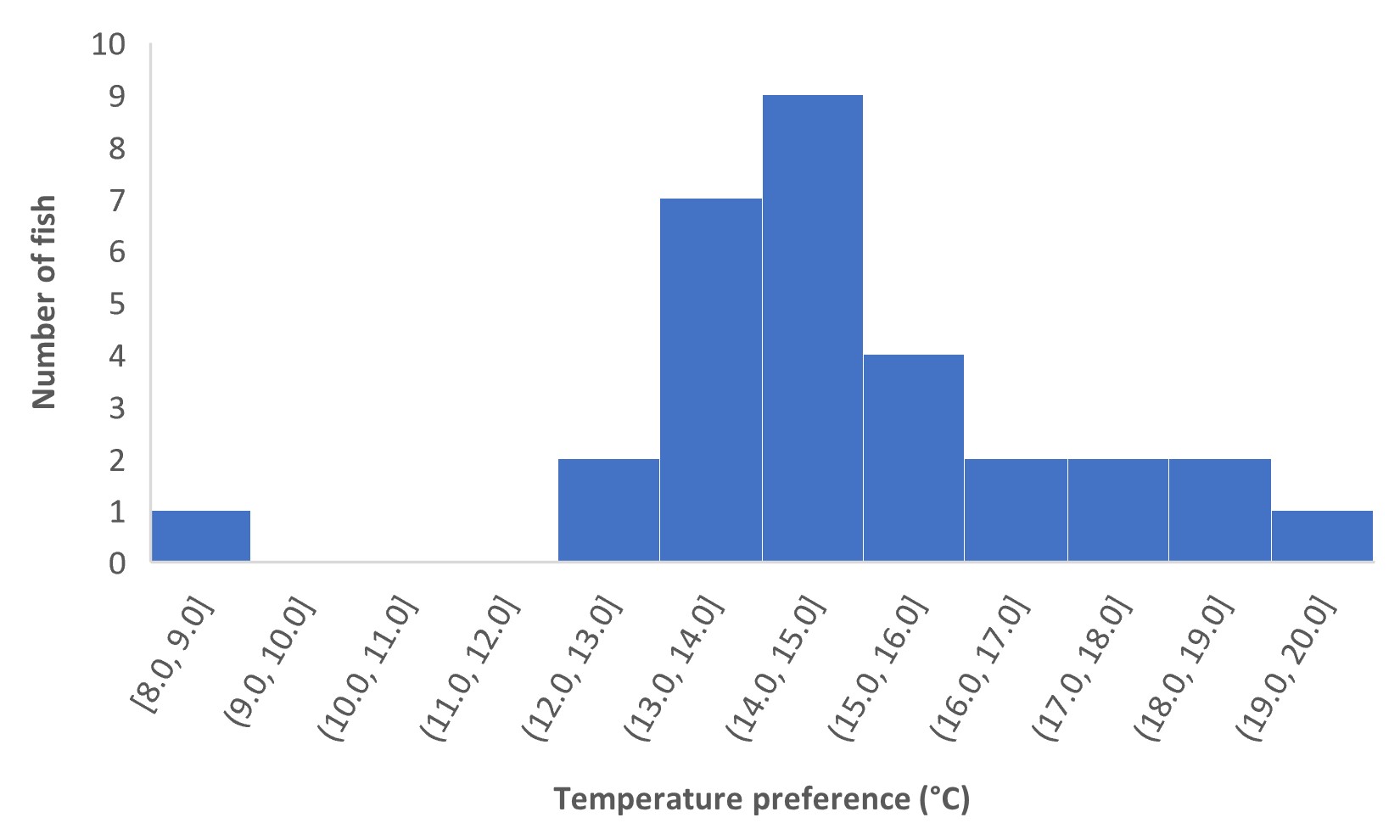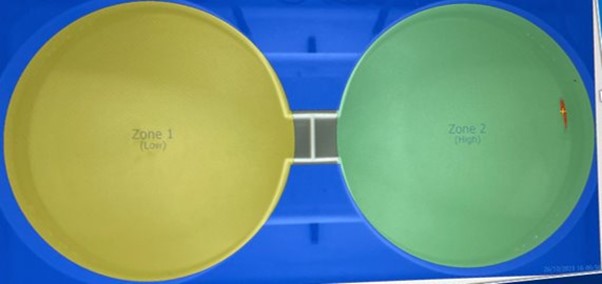Shuttle box experiments with sea bass revealed that there are large individual differences in temperature preference, varying from a maximum of 19.6 °C to a minimum of 8.0°C. The mean temperature preference was 14.9 ± 2.2 °C (± SD), which was close to the temperature of the environment where the fish were originally collected (16 °C) and the temperature of the holding tanks (15 °C). The Centre for Sustainable Aquatic Research (CSAR) has recently acquired a shuttle box – a two-compartment box, in one compartment the temperature increases whereas on the other it decreases. Both compartments start with the same temperature and the fish can swim freely between the two and choose to stay on the side that is more pleasant. In this preliminary experiment with 30 sea bass, some fish moved frequently and thereby only allowed slow changes in core temperature, while others chose to move less frequently in the shuttlebox thereby exposing themselves to relatively rapid changes in core temperature. This is somewhat surprising given the fish are from the same age class, were collected at the same location, and have been held under standardised conditions. This research is funded by the European Regional Development Fund under the Ireland Wales Programme and we will be investigating the underlying mechanisms that determine individual differences in temperature preference, including behavioural (boldness), physiological (metabolism) and morphological (size, body shape) traits.

Figure 1 – Graph showing temperature preference data for the 30 sea bass tested in the shuttlebox.

Figure 2 – Shuttle box showing the two preference zones (of low and high temperature); the sea bass being tested is highlighted in red (Chloe Woodland).
The STREAM project is partly funded by the European Regional Development Fund under the Ireland Wales Programme.


